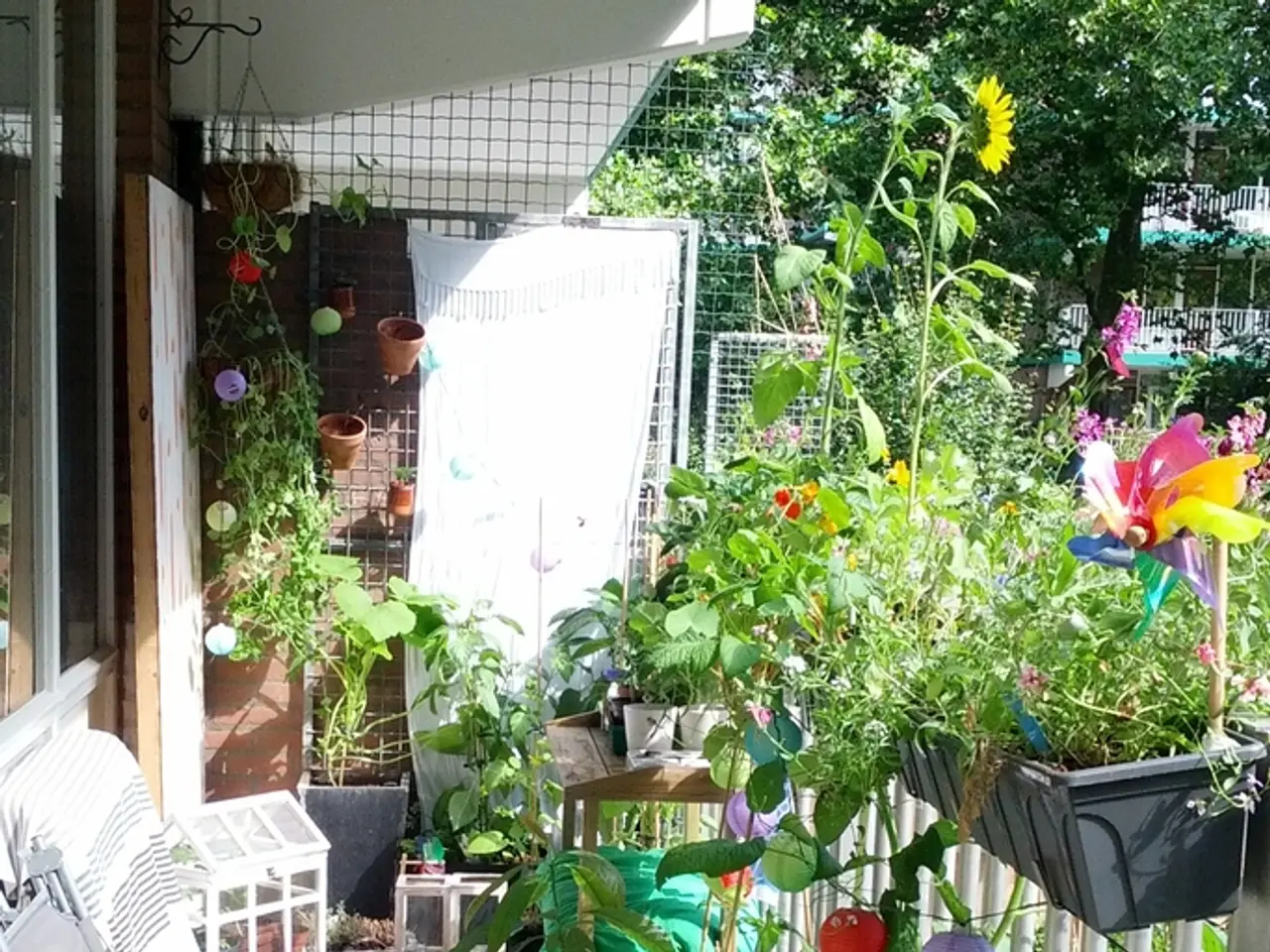Preferred elements of the residence lie in the historic details, notably the expansive windows and lofty rooflines.
In the picturesque town of Newton Abbot, Marisha Taylor and her husband Chris embarked on an exciting journey in 2019, purchasing a seven-bedroom Victorian house built in 1890. The grand proportions and beautiful period features of the house immediately captured their hearts.
The renovation process was a labour of love, focusing on preserving the house's character and unique features while making it practical for modern living. The open plan kitchen diner, however, proved to be the most challenging part of the project.
To fit the space, a custom-made table and bench seat in reclaimed oak were added, with black painted legs to match the island unit. The kitchen was decorated with a floral wallpaper, specifically Sandberg Linnea wallpaper in Garden Green, to add warmth and interest.
The living room was designed to highlight the large windows, fireplace, and cornicing using warm neutrals. The mantelpiece, cornicing, and windows in the living room are considered stunning, maintaining the room's original charm while providing a cosy and inviting atmosphere.
The main bedroom features light-colored walls with a delicate floral wallpaper to frame the countryside views and maximize natural light. Window shutters were added to the main bedroom, and the en suite bathroom was painted in a warm white to brighten it up.
A curved walk-in wardrobe provides a stylish storage solution and hides the en suite, while the hallway of the house was painted pale blue with cream carpet, later replaced with tiles for durability.
One of the most enchanting rooms in the house is the child's room, where a pretty, pink canopy was added to create a cozy reading nook for bedtime stories. The room also boasts a vintage doll's house, the daughter's favourite toy.
The couple fell in love with the grand proportions and beautiful period features of the house, and they have carefully preserved these elements while making practical improvements for modern living. The house, located in a rural setting overlooking woodlands, is close to the local town, train station, children's schools, and sports clubs.
Practical tips for renovating a Victorian home while preserving its period features and making it suitable for modern living include repairing original architectural details, upgrading building systems sensitively, improving energy efficiency discreetly, and engaging specialists. By balancing preservation with modern living needs and energy efficiency, you can transform a Victorian home into a comfortable, functional, and beautiful space that honours its unique heritage.
In the realm of home-and-garden and interior-design, incorporating houseplants would add a touch of nature's charm to the newly remodeled Victorian home, harmoniously blending with the maintained period features. This decision would align with their lifestyle and home-improvement goals, contributing to a cozier and warmer ambiance.
As part of the home-improvement process, updating the home office with modern furniture and technology, while preserving the original interior design, would make it a functional space for Marisha's work, promoting efficiency and productivity.








